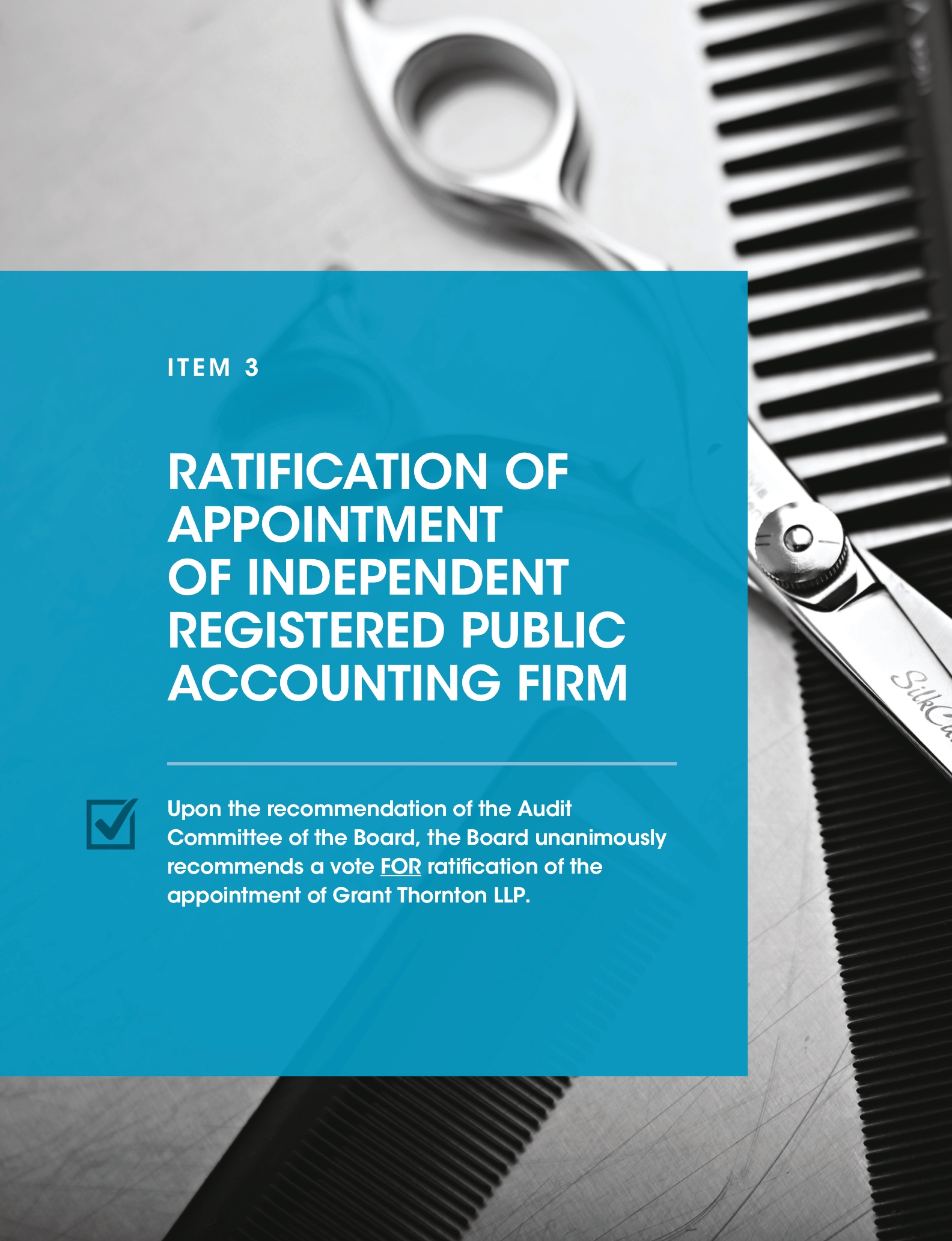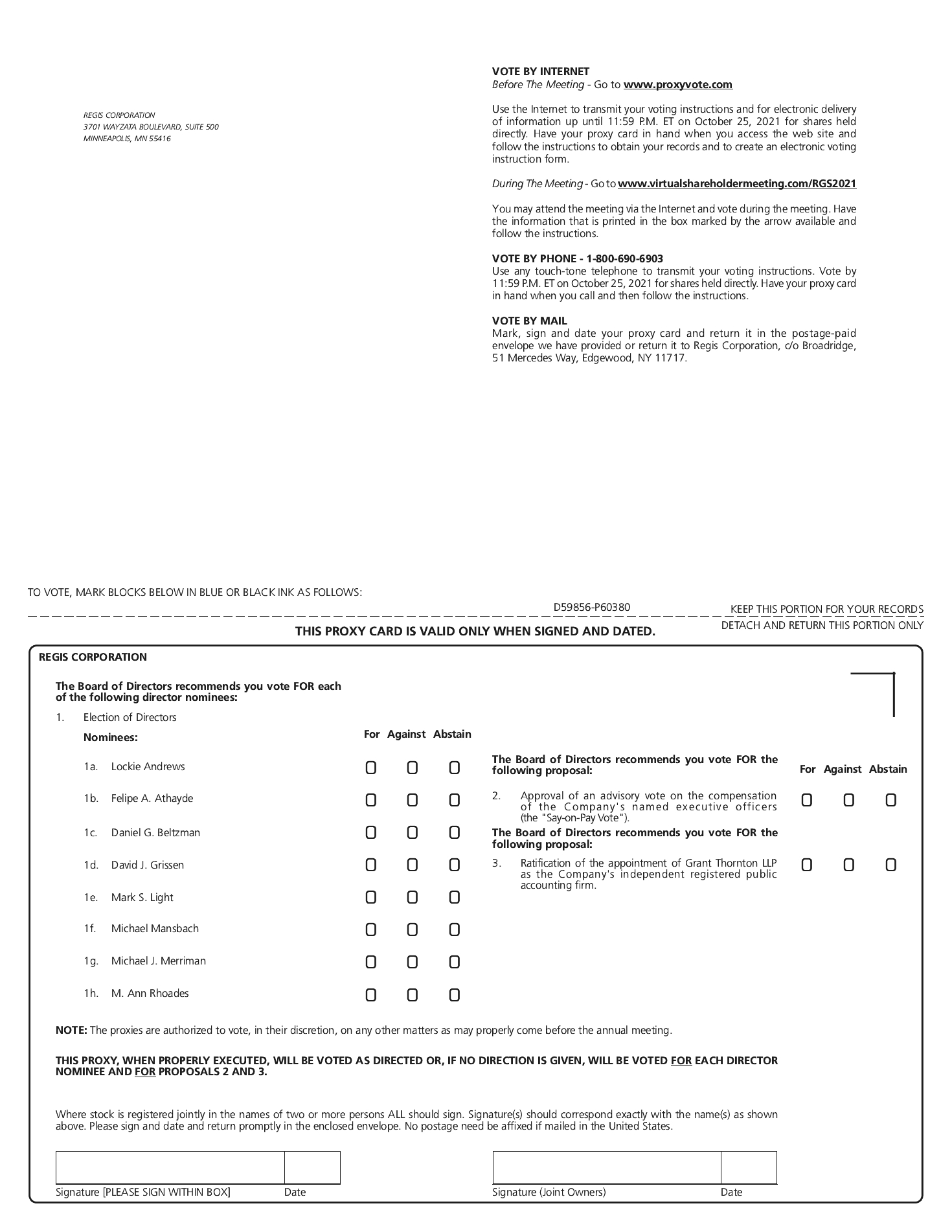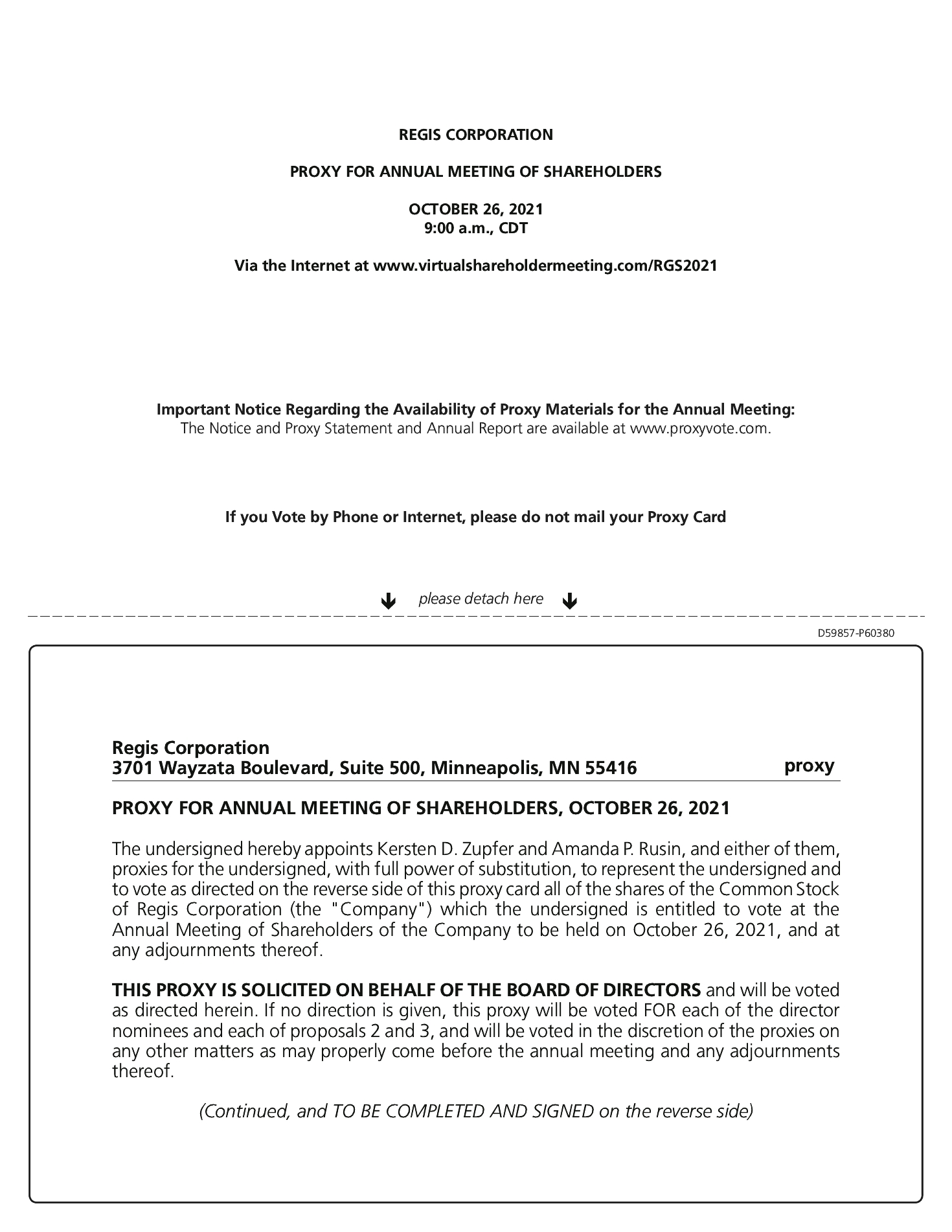Reason within 24 months following a change of control, then he would instead receive an amount equal to two times base salary plus two times the target annual bonus for the year of termination, as well as 18 months of benefits continuation payments, subject to reduction pursuant to the “best of net” provisions in the employment agreement. For Mr. Sawyer and Ms. Zupfer, the severance amount was/is the same for any dismissal without Cause.
| • | Dismissal for Cause or Resignation Without Good Reason. The NEOs are entitled to accrued compensation and obligations where dismissal is for Cause or resignation is without Good Reason. In the event of a termination of employment for Cause or resignation without Good Reason, severance benefits would not be payable. |
Provision for Offset of Severance—The employment agreements provide that severance payments will be paid over the course of the severance period and offset by any compensation an NEO receives from other substantially full-time employment during the severance period. However, the Compensation Committee modified these provisions during fiscal 2017 to provide that severance will not offset by non-competitive employment. The severance payments are also contingent upon signing, and not rescinding, a release of claims and complying with certain non-competition and non-solicitation covenants.
Restrictive Covenants—The NEOs are subject to restrictive covenants prohibiting the disclosure or use of confidential information, along with two-year covenants regarding non-competition and non-solicitation of employees. Our remedies for violation of restrictive covenants include injunctive relief and forfeiture of severance benefits.
Mandatory Arbitration—Disputes arising under the employment agreements are to be resolved by binding arbitration.
Sign-On, Relocation, and Related Benefits
When executive officers join the Company, from time to time, we have agreed to sign-on incentives and relocation benefits that are not part of their ongoing compensation to incentivize them to leave their former employers and join the Company. Specifically, these benefits to the NEOs include:
Sign-On Incentives—When Mr. Kapadia joined the Company in June 2018, he received a sign-on bonus equal to $75,000 and initial equity awards with an aggregate value of $350,000, comprised of $262,500 of PSUs and $37,500 of RSUs. When Mr. Sawyer joined the Company in April 2017, he received a sign-on bonus equal to $585,000, subject to a one-year clawback, and initial equity awards with an aggregate value of $5.0 million, comprised of $4.0 million of stock-settled SARs and $1.0 million of RSUs. When Mr. Athayde joined the Company in October 2020, he received a sign-bonus equal to $2,500,000, subject to a one-year clawback, and initial equity awards with an aggregate value of $5.0 million, comprised of $4.0 million of stock-settled SARs and $1.0 million of RSUs. See below for further detail about these awards.
Relocation Expenses—We reimbursed Mr. Sawyer $175,000 for temporary housing expenses for 18 months following commencement of his employment, and we reimbursed Mr. Athayde $150,000 for relocation and temporary housing expenses for 12 months following commencement of his employment.
Historical Retirement and Life Insurance Benefits
Retirement Benefits—Pursuant to certain grandfathered provisions of Mr. Bakken’s employment agreement, upon retirement (at or after age 65), Mr. Bakken would have been entitled to receive a lump sum cash payment equal to the present value of a hypothetical annuity of monthly payments that are equal to the greater of $5,000 or 40% of his respective five-year average monthly compensation for the five-year period ended June 30, 2012 (i.e., July 1, 2007 through June 30, 2012), excluding bonuses (subject to a 20-year vesting schedule), to be paid for 240 months. Mr. Bakken’s employment agreement provided that he would be entitled to the fully vested benefit if his employment was terminated without Cause or if he terminated for Good Reason at any time, and it provided that he would be entitled to the fully vested benefit if his employment terminated for any reason other than for Cause within two years of a Change in Control. Additionally, upon any termination following a Change in Control (except for Cause), Mr. Bakken would have been entitled to receive: (i) the same retirement benefits described below, except that the lump sum would be equal to the sum of the payments due, determined as if he was fully vested, and (ii) a lump sum payment of any unpaid amounts described below under “Life Insurance.”
Under this arrangement, Mr. Bakken had the option to elect to receive his retirement benefit in the form of 240 monthly payments rather than a lump sum; provided that, such election was made in accordance with the requirements described in his employment agreement and consistent with Code Section 409A. In addition to the possibility for reduction based on (i) the vesting schedule and/or (ii) the present value discount for a lump sum payment, Mr. Bakken’s retirement benefit was subject to





















